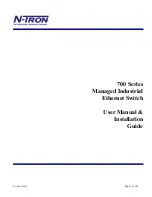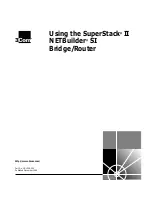
F5D7234-4 v4 Wireless G Router User Manual Rev1
Page 35 of 61
browser’s navigation bar. You can set the encryption settings, MAC address
filtering, SSID, and channel normally.
Configuring the Firewall
Your Router is equipped with a firewall that will protect your network from a wide
array of common hacker attacks including:
• IP Spoofing
• SYN flood
• Land Attack
• UDP flooding
• Ping of Death (PoD)
• Tear Drop Attack
• Denial of Service (DoS)
• ICMP defect
• IP with zero length
• RIP defect
• Smurf Attack
• Fragment flooding
• TCP Null Scan
The firewall also masks common ports that are frequently used to attack
networks. These ports appear to be “Stealth”, meaning that for all intents and
purposes, they do not exist to a would-be hacker. You can turn the firewall
function off if needed; however, while disabling the firewall protection will not
leave your network completely vulnerable to hacker attacks, it is recommended
that you leave the firewall enabled.
Configuring Internal Forwarding Settings
The “Virtual Servers” function will allow you to route external (Internet) calls for
services such as a web server (port 80), FTP server (Port 21), or other
applications through your Router to your internal network. Since your internal
computers are protected by a firewall, computers outside your network (over the
Internet) cannot get to them because they cannot be “seen.” You will need to
contact the application vendor to find out which port settings you need.
Entering Settings into the Virtual Server
To enter settings, enter the IP address in the space provided for the internal
(server) machine, and the port(s) required to pass. Then select the port type
(TCP or UDP), port number, check the “Enable” box, and click “Set”. Opening
ports in your firewall can pose a security risk. You can enable and disable
settings very quickly. It is recommended that you disable the settings when you
are not using a specific application.
















































